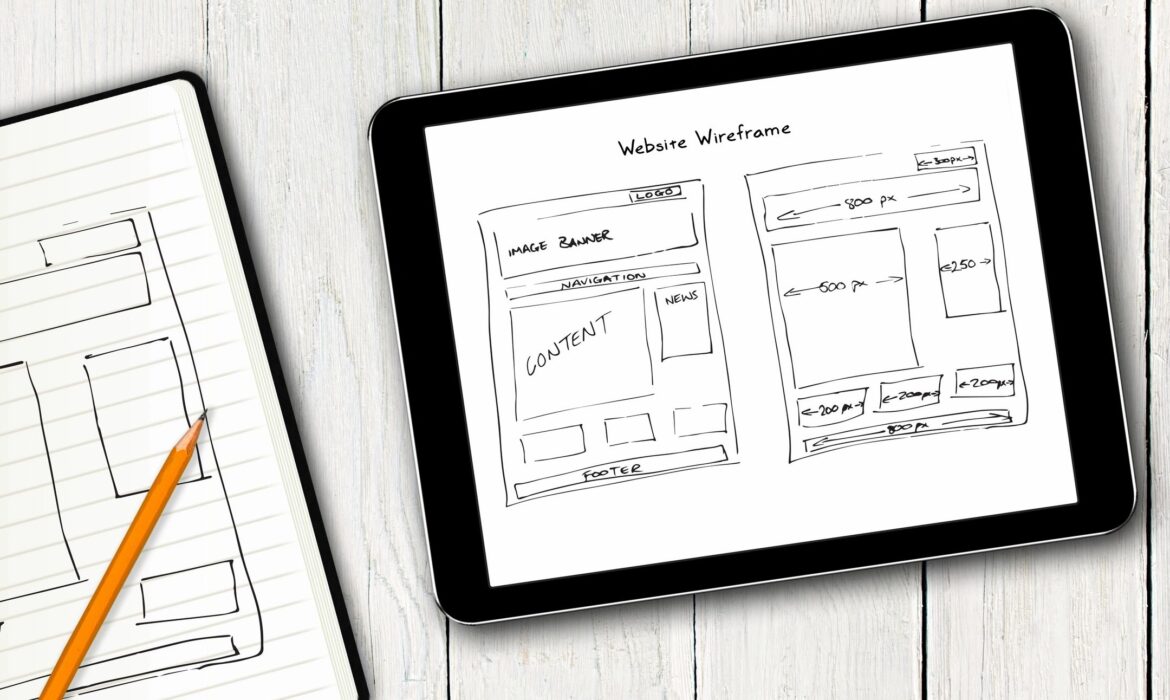6 Tips for Writing Killer B2B Product Pages
A successful B2B business marketing journey starts with top-quality content.
- Get it right – thrive!
- Get it wrong – prepare to fail.
Whether you want to make some noise about your new product, expand your market or increase awareness and visibility about a specific solution, one thing you need on your side is great content.
But creating killer B2B product pages is no easy task. So, we’ve put together 6 top tips to help yo create powerful content, connect with your audience and draw them to your marketing funnel.
Do Your Research and Understand Your Customers
Before you put pen to paper or touch your keyboard, you must conduct research and get to know your target market:
- Who are they?
- What do they do?
- What do they read?
- What platforms do they visit online?
- What are their pain points?
- What are their challenges?
- What are their ambitions?
- What do they need/want?
- Does your product or solution meet their demands?
- What problems does your solution solve for them?
Create a buyer persona to use as your ultimate guide during your creative process.
Create Killer Headlines For Your Products & Services
A compelling headline is an absolute must. What is it about your product or service that will make them visit your site? Fail to grab their attention and they’ll scroll on by.
Make your headline stand. Not in a clever or quirky way but in a simple and strong way. State clearly how your product or service addresses their pain points.
Talk Directly to Your Customers
Regardless of your industry, make sure your content addresses your audience directly.
Don’t open with “This product or solution does this and helps retailers/banks/restaurants to achieve that.” You’re not talking to a retail store, a bank or a restaurant.
Talk to the person you want to engage – “This product helps YOU to achieve THIS.”
Refer to Your Customers’ Pain Points and Needs
When creating your product page don’t focus on how great you think your product is. Tell people what it will do for them.
Be clear. Keep it short. Put yourself in your customers’ shoes.
Instead of saying “This is an amazing solution”, just explain simply and clearly what it is, what it does and what it brings.
Use empathy. Show customers you understand them – “We know what you’re going through, that’s why we created this product in the first place. We’ve got your back. You’ll solve these problems; you’ll achieve these results by buying our product.”
Once you’ve written your content, go and sit on the other side of the table and read it out loud. Imagine you’re the customer hearing this. Would you be convinced?
Is it appealing? Is everything clear enough? Only when the answer to these questions is “YES”, can you move on to the next step.
Speak your Customers’ Language
It’s important to know your customers’ language. Read what your customers read, follow LinkedIn pages they follow, get to grips with their terminology. Watch their interviews on YouTube. Read the news in their industry. This will not just come to you in a flash of inspiration. But it’s all out there. All you need to do is go and find it.
With this knowledge in your back pocket, your content will read as if you understand the industry, know your customers’ needs and have the tools to help them achieve their goals.
What is your product’s story?
Find it. Bring it out. After all, marketing comes down to the stories we tell.
If you think to yourself. “But this is a product page, not a novel”, ditch that thought.
We all know that. Your customers know that. But stories are what stick with the people. It doesn’t have to be a soap opera or a love story.
Your product’s story is about the experience it will create. What does your product do so well that your customers will go tell colleagues and friends about it? What is it that is so unique about what you’re selling? Find it. Bring it out.
At Fascinatid, we always say your B2B product page should stick in the mind of your reader.
Focus on clear, concise content that explains the challenges your product or service solves and the value it brings to your customers.
If you want killer content that increases conversions, but you’re not sure where to start, get in touch. Our expert B2B marketing team is here to help!
6 Tips for Building Your IT company’s Marketing Strategy for a Post Covid-19 World
Welcome to the Future of B2B Marketing
Covid-19 has forced B2B buyers to shift significantly towards digital solutions. It’s been almost a year since sales teams said goodbye to face-to-face meetings and customer visits, and B2B events have been canceled all around the world. The way we do business has changed completely. As we adapt to these new realities, customer-centric IT companies are tearing up their “business-as-usual” plans and also reimagining their marketing operations.
In this new normal everything is digital – including B2B marketing. More importantly, this shift to digital is likely to become permanent. The world is changed for good. So has B2B marketing.
So how do you navigate the ‘now of business’ to shape your marketing activities in a post-Covid-19 world?
At Fascinatid, we know first-hand the challenges IT companies have been dealing with since the beginning of the pandemic. So, we’ve put together a few tips for you to use in your next marketing strategy to help navigate these times as successfully and efficiently as possible.
Choose Customer-Centricity Over Product-Centricity
We now live in a world that your customers behave differently. The winners of the new normal will be those that understand this and are able to adapt to the changing needs of their customers. Focus on your customers, not on your products.
Engage Your Customers with Empathy
When you become customer-centric, you channel your products and services to meet customer demands. Make sure you listen to them, understand their current pain points and find the best solutions for them in the new normal.
Adjust Your Social Media Communications
We are still in times of crisis. Make sure you keep this in mind while creating your social media strategy. Regardless of the channel you use, be sure to deliver the right message, to the right person, at the right time. Only publish and share things that are relevant to your audience.
Optimize Digital Advertising
Before Covid-19, made sense to spend some of your budgets on sponsorship for physical events. In the new normal, not so much. Make the most of your advertising budget by embracing the digital revolution.
Accelerate Your Website
Every paying customer visits your website at some point during their buying journey. So, make it a masterpiece. Your website needs to be visually appealing and answer any questions or objections your customers may have.
Re-Strategise Your E-mail Marketing Plan
This new normal is a good time to continue email marketing campaigns to engage with your digital audience. What matters the most at a time packed full of unknowns is to communicate with empathy. Feel confident reaching to your audience through newsletters and emails and let them know what you’re doing to help.
Need a Little Help?
As Fascinatid team, we understand the challenges your IT company has been going through. We are here to support and provide guidance in navigating your B2B business in the new normal. This is why now more than ever, we’re excited about the value of our services. Shoot us an email, our friendly team of experts are here to help you enhance your marketing strategy and activities.
How to Make Case Studies Your B2B Superpower!
Winning new business is no easy task in the B2B world. Competition is high in every market and there are so many alternatives for potential clients to choose from. Not to mention the B2B buyer’s journey gets more complex every day.
That’s why finding ways to make your products and services stand out is no longer optional– it’s essential. If you want to thrive, you need to find the shortcuts that actually help you reach your target audience and get on top of those journeys.
Gone are the days when simply talking up your company would result in new clients.
Take a look at the most successful companies in the B2B sector. How do they market themselves? The smart ones let their clients speak for them.
Creating and Publishing Powerful Case Studies is a Great Way to Showcase Your Talents with Real Examples of Your Work.
- Not your product
- Not your solution
- Not your helpful blog
- Not your fancy website
Of course, these are necessary components of your marketing toolbox. But it’s your “case study” that will help you best demonstrate your ability to deliver on your promises.
A case study is not just you explaining to potential clients what you do and how well you do it. It’s existing or previous customer showing them; talking about how you helped them get somewhere, achieve something or solve a problem they were facing.
Is there a better way to showcase your talents?
It’s not mere promises. It’s demonstrable results from real jobs.
Think of a potential customer reading the case study and thinking. “These people had similar issues to what I’m facing. They chose this company and they got results. I’ll give it a shot.”
So, you understand the value of a case study. But how do you create one?
Here’s a quick guide to a successful case study.
First of all, don’t think of a case study as a long, tedious report. It might be 2-3 pages; it might be even shorter than that. The important thing is to stick to what’s relevant and don’t pad it out with waffle.
You could even produce case study videos in which you get your client in front of the camera to tell their story.
Infographics are also a fun way to show the most important parts of the success story using a nice visual. And let’s not forget about podcasts. How about interviewing your customer? You could produce a podcast where you chat about the project, and even write a summary of it to publish on your website.
The possibilities are almost endless. It doesn’t matter which format you choose. The important thing is to put your customer in the spotlight.
How do I use case studies to generate leads?
Right, let’s assume you’ve created a case study that rocks. Now what do you do with it?
- You get it out there.
- Your case study is your “Holy Grail”.
- Use it. Make the most of it.
Just shoot for the moon. Think of any and all the ways you can use it which make sense for your business and speak to your customers. You should definitely publish it on your website. You could consider just posting an excerpt to use as gated content. This way you can ask visitors to give you their email address in order to download and play, listen to or read the whole story.
You could create 30 seconds videos to use as a promo. You might want to create testimonial posts to publish on your social media channels. You could even create press releases or publish it on a third-party site which is well-established and respected in your industry.
Did we mention newsletters? You can also include your case study in promotional emails.
Think how potential clients are most likely to consume your case study. Try different methods. The important thing is that you use it to generate leads.
At fascinatid, We Create Case Studies That Become Your Superpower
We understand B2B markets. And we know how important it is to showcase your B2B company’s capabilities and value through case studies. If you’re looking to grow or expand your business, case studies should be one of your key marketing activities. We have seen tremendous results with many of our customers when they’ve let their customers do the talking. And these case studies helped them achieve significant expansion.
But we also know that creating great case studies which engage your audience and don’t include fluff, is not easy. That’s why we offer our expertise to produce case studies that become your superpower.
We empower you to show your potential and existing customers that you rocked. Again. We do this through the power of storytelling.
- By showing what is unique and different about your offering from your customer’s point of view.
- By focusing on your client’s success.
If you’re ready to rock, we’re ready to take your call.
What To Ask When Hiring a Digital Marketing Agency
The digital marketing landscape changes on a daily basis. Not a quarter goes by where there isn’t a new platform or marketing channel that pops up, and unless you have the time and in-house marketing resources to keep up, your business can easily get left behind.
You may have already considered hiring a Junior Marketing Exec or two, but decided against it after realising there are too many marketing strategies, channels, and resources for one or two people to manage effectively.
Between content production, social media management, email marketing, SEO, media buying, and PR, you’d need to hire and train a whole team. But that would put a huge strain on your budget. Plus there is the additional time and cost involved in hiring, training, and managing them all.
Hiring a digital marketing agency is a much smarter move. With a digital marketing agency, you’re partnering with a team of industry experts, who have one goal – to grow your business and keep you as a customer.
BUT…
There are a huge number of digital marketing agencies out there, and unfortunately, the barrier to entry isn’t very high. Almost anyone can watch a few Youtube videos and call themselves a marketing expert.
So how do you know you’re getting the ‘real deal’ and the best results and return on your investment? Here are the 7 questions you must ask before hiring a digital marketing agency.
1. Are They Experts at Marketing in Your Industry?
If you’re a tech or IT business, you need to partner with an agency that specialises in tech marketing. There’s a HUGE difference in the way an e-commerce store markets itself compared with a B2B tech business.
Tech marketing is particularly nuanced and should only be handled by those with industry experience.
You need to know that your chosen agency understands your customers, your products, and what it takes to get your market excited about what you do. Generalists just won’t get you the return you want from your marketing spend.
2. Are They Experts in Various Martech Solutions?
There are so many different martech solutions out there and you want to be sure you’re dealing with an agency that is proficient with many of them. Try and get a sense of the kind of tech stack they’re working with. You need to know they’re well versed in everything from Hubspot and Canva, to Klaviyo and SocialPilot.
An agency only using a handful of martech solutions is unlikely to bring you the kind of results you’re looking to grow your business.
3. What KPIs Are They Tracking?
You should look at a digital marketing agency as an investment rather than a service provider. As with all investments, you need to be sure you’re getting a positive ROI. So it’s vital you know:
· What KPIs the agency routinely tracks for you
· How they’re going to report those KPIs to you.
The numbers they pay most attention to will depend on the goals you set for your agency. So, the first question they should be asking you is, “What are your goals?”
Are you looking for more social media followers? Do you want to rank higher in search engine results? Are you trying to get better conversions from your sales pages?
Before you even contact a digital marketing agency, make sure you understand what you’re trying to achieve. Then ensure the agency you decide to hire has the ability to track the numbers and is able to work towards your clearly defined goals.
4. Do You Get a Designated Account Manager?
This question is often overlooked but can tell you a great deal about the digital marketing agency you’re talking to. You should be offered at least one main point of contact or ‘marketing hero’. That person should be available any time you have questions, want to see results, or want to talk about anything else related to your account.
The other question you should ask is, how many people will be working on your account and whether it is possible to meet them. With apps such as Zoom and Google Meet, there’s no reason you shouldn’t be able to get an introduction to everyone involved with your account.
If a digital marketing agency isn’t willing to let you get a feel for everyone working on your project, then it’s probably worth doing some more digging. It could be you’re talking to a “one-man band,” or that something else is going on. In either event, secrecy or an unwillingness to introduce the whole team should ring alarm bells. With any business relationship, transparency is vital and if it’s not there from the get-go, it should be a big red flag for you.
5. Who Else is The Agency Working With?
The important thing to look out for here is what other types of companies they’re currently working with. Are they in a similar industry to yours? What kind of projects are they doing for them?
You’re not necessarily looking for them to have a list of 20-30 clients, but you do want to see that they are working with at least a few other companies in your industry or something closely related to it. This will demonstrate that they have the kind of experience you need and that their services are in some kind of demand. An agency only working with one or two other clients is either very small or is not doing a good enough job to attract more clients.
The second VERY important part of this question should be, “Can you show me any case studies or testimonials of clients you’ve had success with?”
A successful digital marketing agency should have at least a handful of case studies they can show you. These should demonstrate, with clear metrics, the kind of success they achieved for the client and what strategies they used to get there. It’s always worth Googling the companies mentioned so you can take a look at them first hand.
6. How Quickly You Can Expect to See Results?
OK, so this one is a bit of a loaded question. But the way the agency answers it will tell you a lot about them. If your goals are SEO-related, any agency that tells you they’ll get immediate results is worth walking away from.
When it comes to SEO or anything organic-related growth, the promise of immediate results is another big red flag. There’s no way of guaranteeing instant SEO results because of the way search engines work and how often they crawl websites.
The only time a digital marketing agency can guarantee any kind of instant results is if they’re doing something related to paid advertising or conversion optimization. With paid marketing efforts, you’re paying for traffic which means you can generate some kind of result right out of the gate.
7. What Expectations Do They Have Of You?
This is the last, but probably most important question to ask them. What are they going to need from you on a weekly or monthly basis? Clue: They should need at least some engagement with you on a weekly basis.
They should want your feedback on content, customer feedback, and results. Your agency should want feedback on how accurately they’re capturing your brand voice. They should want to ensure customers are responding positively to any content produced, and they should want to make sure you’re happy with the direction everything is moving.
Without clear communication, there’s no way they can optimise their strategy and keep moving your numbers in the right direction.
It may seem daunting, but finding the answers to these questions will make hiring the best digital marketing agency for your business much easier.If you’re looking for a Tech Digital Marketing Agency who can answer all 7 of those questions, and help you take your business to the next level, click here and one of our experts will be in touch to start the conversation.
Some useful trends in digital marketing for B2B companies in 2021
1. Chatbots and conversational marketing
Given the lack of social contact we’ve all had over the last 18 months, chatbots and other conversational marketing tools will be essential for anyone operating in the B2B space. People are looking for human interaction that provides instant responses to issues they’re facing. Companies can’t afford to wait for weeks to get responses to their requests. They need answers quickly at any time – which only chatbots can provide. These tools can be the kickstart to a sale whilst also providing accessible support to your customers so don’t overlook them.
2. Data-driven content
B2B content strategy is evolving fast, and we’re seeing data-driven content growing in importance. Content creators have a great deal of data at their disposal, which means they can see in real time whether their content is engaging potential leads. By being able to measure what content is driving reach, B2B content creators are constantly honing their output according to reliable information. This ensures they are always zeroing in on their target audience and providing useful, accessible, and attention-grabbing material.
3. Paying attention to back-end SEO
Search Engine Optimisation is so much more than using keywords on a web page and having a website with well-functioning navigation. In 2021, good optimisation requires businesses to pay detailed attention to the technical, back-end elements of their site. The technical, back-end components of your website allow bots to better understand and index your website. In turn, these bots help search engines understand the intentions of your website, and its businesses priorities and purpose. So, having good back-end optimization is key to getting your website in front of your target audience.
Useful questions to ask an agency you’re looking to work with
As with any big business decision, it’s important to make sure you’ve done your research and to get assurances from your chosen digital marketing agency that they will deliver on your business aims.
Here are a few useful questions to ask an agency you might be approaching:
- What KPIs do they measure?
- Do they have experience?
- How do they handle reporting?
- What ROI can you expect?
- Do they have a client portfolio and success stories?
- Do they outsource?
- What is their specialism?
Summing up
With digital teams increasingly expected to deal with anything from automation to performance marketing, it makes sense to work with a digital marketing agency that has both an aptitude for learning and that is prepared to tackle the breadth of what digital can throw at it. Fascinatid staff are experienced experts who can help you navigate the challenges associated with a shifting digital environment and give you a fresh perspective on your business aims, and how to meet them by drawing up a bespoke marketing plan within your budget. Fascinatid will work tirelessly to ensure your products, services and ideas find relevant audiences amongst consumers and businesses alike. Contact Fascinatid today so we can discuss ways to help your company level up its digital presence and improve your bottom line.
Why Working With a Digital Marketing Agency is Great for Your Business
Digital marketing can no longer be viewed as an additional extra. It is an intrinsic part of any successful modern business. This is particularly the case for technology companies who need to be at the cutting edge of the latest trends and developments in order to thrive in a competitive field.
Digital marketing agencies help businesses by creating comprehensive online strategies and optimizing their digital presence in a number of ways. A few fast-moving areas you might need expert guidance on include:
- Email Automation: Honing your e-mail marketing strategy and delivering on it requires expertise in the area of automation.
- Social Media Management: Social platforms are frequently refining feed algorithms and adding new advertising features. Digital marketing agencies can help you increase brand awareness and social traffic by ensuring your messages grab the attention in a crowded sphere.
- Content Marketing: Best practices change as users familiarise themselves with new devices. Understanding new formats and how they can be used to best engage other businesses, thought leaders and customers is a challenge that digital marketing agencies can help you master.
- Search Engine Optimization: Search engines frequently change their algorithms, making optimization a challenge for those lacking the requisite expertise.
All companies can benefit from using a digital marketing agency
It’s important to remember that digital marketing agencies aren’t just required by companies that need to completely outsource their digital marketing. They can be a great asset for organisations that are looking to augment their in-house team. No matter what the reason is, the digital landscape is in such a constant state of flux that you’ll need to partner with an agency that will keep you ahead of the curve.
During this blog post, we’ll talk you through how and why working with a digital marketing agency that provides quality services based on experience and expertise, such as Fascinatid, is the right decision for your business.
5 key reasons why hiring a digital marketing agency can boost your business
1. Cost-effective
The cost of hiring an in-house marketing team is substantial. You need experienced people who can manage, interrogate, report, write, research, and analyse your marketing strategy. A qualified digital marketing agency has all of these specialisms and more for a fraction of the cost of sourcing a reputable in-house team.
What’s more, Fascinatid and other agencies regularly use tools and programmes that most business professionals are unfamiliar with. Agencies know how to harness these tools and platforms to take their work to the next level and improve outcomes for your business. These tools, like analytics platforms, can often be expensive so by using an agency you save on having to purchase them yourself.
2. Improve agility
By using an agency you can outsource work to experts, allowing you to focus on what you do best. Freeing up your time to focus on your core business will help you run your business more efficiently, safe in the knowledge your marketing is in the hands of experts.
Secondly, an agency has the relevant professionals to navigate the latest trends, rule-changes, advertising formats, and algorithm shifts. Trying to hire the relevant people is a lengthy process that can take upwards of three months, and there’s always the risk that as the digital environment shifts, their skills become redundant. That’s why using an agency that has a great staff with knowledge of the changing landscape of digital marketing will give your business the agility it needs.
3. Expert opinion, insight & analysis
Digital marketing agencies can examine your current strategy, find and analyse the flaws within it, and come up with ways to improve it. This is particularly the case when working with clients in the technology sector. Maybe your ads are on the right platforms but not reaching the relevant audiences. Or maybe your search engine optimization is getting lots of leads, but they are failing to convert. It can be difficult for an untrained eye to diagnose the problems. But experts will have experience of rooting out the issues and suggesting options for remedying them. Moreover, agencies will set measurable goals using key performance indicators so your marketing strategy can be clearly measured and improved. In so doing, the agency gives your business transparency and clarity when it comes to its performance.
4. Bringing fresh ideas to the table
An outside agency will not have the same perceptions and ties to your business that you do. Because they see your company from a different perspective, they might spot a problem you’ve missed. If you’re a technology firm, you might benefit from working with an agency that has experience working with similar companies, but also different sectors, such as financial services. Agencies can use their experience with these different businesses to improve your website or campaign’s performance.
Secondly, a digital marketing agency will stay abreast of market trends no matter what business or sector you fall into. This means they will come armed with plenty of ideas that are informed by audience behaviors from across a range of sectors.
5. Monitoring and measurable results
Because of their different areas of expertise and specialisation in digital marketing, a digital marketing agency will provide you with analytics and reports that give you a tangible measure of the results you are getting through their services. They can also guide you through the complexities of measurement by assigning accurate, tangible values to any campaign to prove the effectiveness of the approach.
High-quality digital agencies will put in the effort to ensure their clients are satisfied. At Facinatid, we treat our clients’ success as a reflection of our company. Across the board, digital agencies do not stop working after they complete a campaign. Instead, they continually test, learn, iterate and improve their work to ensure they’re delivering to the best of their abilities.
Ultimate Guide to B2B Web Design
Your website is the digital face of your business and has a significant impact on your overall brand identity. It must inform, engage and convert your target market. If just one of those elements is missing or below par, you could be missing out on business.
In this ultimate guide to B2B web design, you’ll learn how to design or redesign your site so that it delivers on all the essentials of a high-performing B2B website:
- Style and tone
- Relevance
- Speed
- Accuracy
- Branding
- Conversion rate
Increasing conversion rate is the ultimate goal of any website and should be at the forefront of your mind at every stage of the design process. The key is to put yourself in your users’ shoes and consider what they want from your site. Creating something that you love is all well and good, but if it fails to appeal to your target market, it is a pointless exercise.
The Basics of B2B Web Design
Web design is about making sure you stand out from the crowd, enhance your image and make sales. That means combining SEO (search engine optimization) with practicality.
Research carried out by Google showed that 89% of B2B buyers use the internet during the research phase of their buying process. And the CMO Council says 90% of B2B sales are influenced by online content. So, part of the design process involves optimising your site for SEO.
SEO is a huge topic in its own right and we won’t go into the specifics here, suffice to say that Google uses crawler bots to search, index, and rank web pages in order to display the most relevant pages to its users. These bots attempt to replicate real-life users when scanning your B2B content so by getting your web design right you should already be on the right track.
But that’s only half the battle. Once users arrive at your site, it needs to engage them pretty damn quick. Studies show that your site has around 15 seconds to convince them that it can provide the solution to their search request. To do that your web design should focus on:
- Loading speed
- Customer experience (CX)
- Being mobile-friendly
- Look and feel of the site
- Users’ pain points
- Clearly defining the features and benefits of your product or service
- Obvious CTAs that guide users through your site
Getting all of that across in 15 seconds is not easy. And that’s the art of web design.
Designing with the user in mind
According to McKinsey & Co, fewer than 50% of B2B companies typically score less than 50% in customer satisfaction surveys. And yet results have shown that a positive customer experience can increase sales by up to 300%.
These are key stats when it comes to designing or redesigning your B2B website. They show you the value of designing with the user in mind while also demonstrating that most, if not all of your competitors are behind the game when it comes to CX. And that means there is massive potential if you can nail your web design as it will set you apart from the competition and could make you stand out as an industry leader based on your website alone.
Search intention is the same for B2C and B2B consumers. They go online to find solutions. They may want advice, a service, or a product, but whatever they want, 90% of online purchases begin with a search engine. And, increasingly, that includes mobile devices so it’s important to make sure your site is mobile friendly. It also makes sense to ensure you use a scalable platform so you can upgrade your site as your business grows or new technologies become available. Because, as we all know, once new tech hits the market, consumer expectations soon adapt to demand it.
CX should be an easy win for companies because, even if you have no technical design experience, you understand what somebody wants when they arrive on a landing page. They expect to see exactly what they were searching for staring them in the face. And nobody should know your target market better than you.
Designing a site that your users will love is as simple as knowing what they want it to provide and putting those things front and centre so they can’t miss them. Well, ok it’s not quite that simple but you get the picture.
You don’t need to be an expert web designer to understand what your clients expect from your site. So, whether you are designing the site yourself, conveying your vision to a web design agency, or checking out the latest iteration of your site – focus on what your audience is searching for, understanding the specific search terms they use, and delivering web pages that make the solutions easy to find and access.
The importance of content
Branding, colour schemes and images that grab the attention are of no real use if all they do is attract users to a site full of boring, uninspiring or irrelevant content. The mere 15 seconds you have available to draw them in makes all those things necessary, but never forget that it is the way your content is presented and arranged that will determine bounce rate and conversion rate.
Put simply, your content should do four things:
- Explain the features and benefits of your product or service
- Tell users why they should choose you over your competitors
- Create an emotional response
- Guide users seamlessly through the buying journey
Good quality content is one of the most important pillars of SEO and should be given as much credence as all other aspects of web design. Despite what you might hear to the contrary, keywords are still important and should be scattered throughout your site.
Keywords help Google search bots determine what each page of your website is about so they can index it correctly. You will only be penalised by Google for ‘keyword stuffing’. Where keywords are inserted organically into text that is of value to the reader, they remain an important SEO tactic.
Remember not to put in great walls of text that might intimidate readers. Every word should be relevant and sometimes (for example on buttons) a single word or short phrase is often enough to tell the user what to do next.
Landing pages should have plenty of space and the most important messages you need to get across to satisfy the needs of your consumers should be easy to see at a glance. Other, more detailed text should be available at the click of a mouse or the touch of a finger – and the new page must load quickly.
How to optimize your website for SEO
SEO is not a one time only job. It is an ongoing task that involves regularly crunching the numbers to see which of your web pages are succeeding and which require some intervention.
When designing or redesigning your site, the key areas to focus on are:
- Keywords (including long tail keywords)
- Page titles and meta descriptions
- Image loading speed
- Internal links
- Easy navigation around the site
- Integrating your website with your socials
- Ensuring all content is still accurate and aligned with your brand
- Keeping the site fresh by adding regular content (such as a monthly blog)
Aside from the way your site is built and the design features that are picked up by Google’s bots, one of the key drivers for Google in determining the value of your site is the way in which users interact with it. When people spend time on your site and visit multiple pages or follow your CTAs, Google identifies that it has been useful to them. This enhances the credibility of your web pages for the search terms used.
SEO success requires expert knowledge of existing and developing technology, and an understanding of the ever-changing way that Google’s algorithms work. But that doesn’t mean it is distinct from web design. By focusing on the elements listed above and ensuring that your site is built to be user-friendly it is possible to assist SEO through web design.
Invest in quality web design for increased ROI
Many business leaders choose to outsource their web design and SEO to agencies. Web design is such a crucial part of your branding that it cannot be left to chance. Free templates and ‘build-your-own’ websites offer a quick and easy way to get a site with your name on it. But they don’t allow you to create a truly bespoke site that accurately reflects your business. Indeed, when you use a template, you consign yourself to a website that looks much the same as millions of others out there on the web.
From web design and SEO to social media posts and regular blogging, Fascinatid’s digital marketing services are designed to enhance brand reputation while removing the burden of managing your online presence. When you leave digital marketing to the experts, you don’t just get an SEO optimized website and improved reputation, you free up your own time to focus on delivering excellence and making CX a priority for your business.
For more information or to discuss how embracing the digital transformation and redesigning your website to take advantage of modern technology, get in touch today.
Why Do I Need a Blog on My Website?
The modern consumer does everything online—from shopping to doctor consultations to finding solutions to their current problems. While having a website helps you reach your digital customer by giving online visibility, it doesn’t guarantee that your customers will choose you over your competitors.
In fact, with over 1.8 billion websites today, they might never find you. And if they can’t find you, how will they know that you have one of the best solutions to their problems?
This is why great blog content is critical to your website and digital strategies. It doesn’t only improve your search engine result page (SERP) ranking, but it also builds rapport with your customers. And these aren’t the only benefits you’ll experience. Below are four ways good blogging habits contribute to your long-term growth and success.
4 Advantages of Having Blogs
A blog page is a type of website content that’s updated regularly and aims to provide insight through storytelling or writing an informative article.
While blogs might seem like a costly and unnecessary expense to your website strategy, you have more to lose by not including them. So much so that brands who use blog posts as part of their marketing strategies experience 13x higher return of income (ROI) than those who don’t.
What else can you gain from producing a successful blog post? Here are four benefits that you can’t ignore.
1. Puts you at the front and centre of your customers’ research
What’s the first thing you do when your keyboard no longer works? Chances are, you’re looking for blog reviews on the different keyboard models and brands before buying anything.
Your customers go through the same process: they research first before they purchase a service or product. And blogs help ensure that you’re the first thing they see when they start researching because it provides the answers or solutions to what they’re looking for. Plus, it makes you more searchable by using the keywords that your customers use when they research.
Another way new blog posts improve your searchability is by increasing the backlinks and indexed pages on your website, which improves your SEO/SERP rank.
All of these, in return, drive traffic to your website and expand your reach, which also means more chances to convert them into customers.
2. Establishes your brand as an authority figure
Do you immediately trust someone you just met? No? Well, neither do your customers.
If it’s the first time your customers are buying from you, they’ll first wonder why they should trust you. Next, they’ll think about why they should choose you over your competitors.
Blogs are the perfect tool to quell those doubts. They showcase your in-depth knowledge and skills in the industry by giving them expert insight and advice. Even more, it proves to customers that you know what they’re going through—their specific pain points, questions, and problems—that they’ll feel that they can trust you.
And once you gain their trust, they’ll realise that your brand is superior to your competitors because you know what they’re looking for.
3. Builds customer trust and strengthens loyalty
Here’s the deal, customers don’t like being sold to. In fact, they hate in-your-face selling so much that 80% ignore sponsored content.
So how can you sell your products when your customers dislike self-promotion?
You have your blogs do it for you. Blogs tackle topics that your customers care about and provide insights or solutions to some of their most pressing problems. In doing so, you show customers that you care more about them than your own profit. Thus, they start to trust you and your products.
Not only that, blogs let your customers know more about you by showing your brand persona and business values. And just like in every relationship, the more they get to know you, the more they trust you, and the more they feel loyal towards you.
4. Ensures your long-term continuity
A blog lasts forever, and so are the benefits it brings. For example, you published Blog A on Monday and it gained 100 views on the same day. Then, 75 of those viewers shared it with their friends and family, which they shared with their friends and family, and so on and so forth. While there may be fewer people sharing it by Friday, your blog has reached thousands of people by then, ranking high in online searches. This means that your blog is passively bringing you more potential customers.
In fact, your brand can continue to experience the benefits of your blog content even 100 years later. Just take a look at the Michelin Guide: it was a guidebook that Michelin established in 1889 to entice more people to travel and increase tire demand. Nearly 200 years later, it still helps the Michelin tire company generate sales and establish its position as a business leader.
Now, who wouldn’t want that kind of benefit?
5 Expert Blog Writing Tips
While blogs have the great ability to turn your little-known business into an industry leader, it doesn’t mean you can just produce any blog, and expect its many benefits. Like any valuable thing, it takes time and effort. Here are 5 tips to writing blogs that actually convert customers and sell your products:
- Choose blog topics related to your industry and align with your business goals.
- Write for your customers. Make sure that your blog content is relevant and has value to your customers.
- Always, always, always include keywords by implementing SEO strategies.
- Let your customers know about your new blog by sharing it via email and social media. But make sure to not tell them about your entire blog in the post. Just show them snippets to entice them to open your entire blog on your website.
- Don’t let your blogs die. Post new blogs regularly and update your old blog posts yearly to remain relevant and on the top of your customers’ searches.
Blogs are the key to your success for today and tomorrow
Having a website is no longer enough to create a strong online presence and gain a competitive edge—you also need blogs to do that.
By including blogs in your website strategies, you:
- Put your brand at the front and centre of your customers’ search, increasing your website’s traffic and reach
- Establish your brand as an authority in your industry, which convinces customers to choose you over competitors
- Build customer trust and loyalty, driving long-term revenue to your business
- Ensures long-term continuity by passively driving traffic, conversions, and loyalty
Inbound vs Outbound Marketing for B2B
One of the most important questions for marketing managers in recent years has been whether inbound or outbound B2B marketing is more effective. In this article, we will examine the key points of each approach and what to consider when developing your B2B marketing strategy.
What is outbound B2B marketing?
Outbound B2B marketing is a proactive approach in which you take your brand to your target customers rather than waiting for them to come to you. The marketer identifies relevant potential clients and initiates conversations through outreach efforts, which can be sent in bulk or personalised. It is also known as interruption marketing can be defined as the marketer choosing the interaction. Common practices used in outbound B2B marketing include:
- Direct mail
- Telemarketing
- Brand awareness campaigns
- Bulk email marketing
- Banner advertising
What is inbound B2B marketing?
Inbound B2B marketing is passive and allows the buyer to take action of their own accord instead of responding to direct proposals from the marketer. Here the consumers are exposed to content that allows them to make their own informed decisions. This method can help build trust and strengthen relationships. It is also known as permission-based marketing, as buyers give their permission by viewing content and then beginning a relationship. The techniques used in outbound B2B marketing commonly include:
- Content creation
- Blogging
- Social media
- SEO
- Lead generation
- Lead nurturing
Inbound marketing vs outbound marketing
The tide has recently turned in favour of inbound marketing, with a general belief that outbound marketing is less effective than it used to be. This is because buyers are becoming increasingly overwhelmed by invasive forms of marketing and advertising. Internet-enabled clients prefer to have more control over their purchases, usually carrying out their own research before making a commitment. A recent survey shows that more than 50% of B2B buyers use social media to learn more about products, services and vendors because modern business clients prefer to be fully informed.
Inbound marketing holds the advantage of listening to clients and responding directly to their needs. As marketing guru,Seth Godin puts it: “Don’t find customers for your products, find products for your customers.” Readers of your online content have already shown that they are interested and ready for nurturing. In this respect, inbound marketing gives your B2B clients agency and helps build long-lasting relationships that can form part of a sales funnel. A survey from Databox revealed that 67% of B2B marketers create top-of-the-funnel content most of the time as this is the most critical stage.
But while outreach efforts to a broad range of contacts could be ineffective in the majority of cases, where the target is more carefully defined they are more likely to pay off. Outbound marketing still holds particular relevance for high-end products that require a personal touch.
Outbound marketing is often aided by marketing automation tools that make it easier to instantly connect with higher numbers of potential clients. It’s worth noting, though, that improvements in AI are making it increasingly possible for outbound marketing to be more specific and personalised. A recent report shows that more B2B organisations are making personalisation a priority in 2021.
Budgeting is an additional consideration. Outbound marketing efforts are generally much more costly than their inbound equivalents. For large corporations, this is less of a concern, but it is another reason why small businesses and entrepreneurs warm to inbound marketing.
In B2B marketing, there is a place for both inbound and outbound marketing. The question is which approach is best suited to each individual case, database of clients, or stage in the sales process. While the “pull” of inbound marketing is increasingly popular in an age that is empowered by information, there are still certain occasions when there is a call for that extra “push”.











